November 4th, 2011
 Researchers at Arizona State University have found that our mood or frame of mind can impact how averse we are to losses. This in turn biases how we make basic financial decisions. Its the preference for a bird in the hand versus two in the bush.
Researchers at Arizona State University have found that our mood or frame of mind can impact how averse we are to losses. This in turn biases how we make basic financial decisions. Its the preference for a bird in the hand versus two in the bush.
In the study subjects were put in both a mating and protection frame of mind and revealed a shift in loss aversion with some gender differences.
“For men in a mating frame of mind, loss aversion completely disappeared and they became more focused on wins than losses. For women, on the other hand, mating motivation led them to be even more loss averse, to focus less on possible gains and even more on the pain of loss.”
The researcher suggest that such biases are not irrational but reflect a deep logic rooted in evolution. Women have a bigger stake in mating because they bear the children.
No matter, the research illustrates the central importance of understanding “frame of mind” or think-and-feel and the role it plays in determining important outcomes.

Posted in Cognitive Bias | No Comments »
November 1st, 2011
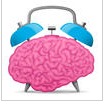 During any 90 minute cycle there are definite windows of time when it is best to wake up. These correspond to times when we are easy to arouse and will awaken refreshed rather than feeling groggy. Fortunately, we can measure these optimal times to awake using an EEG. A team of researcher have used this fact to create an alarm clock that uses sleep analysis:
During any 90 minute cycle there are definite windows of time when it is best to wake up. These correspond to times when we are easy to arouse and will awaken refreshed rather than feeling groggy. Fortunately, we can measure these optimal times to awake using an EEG. A team of researcher have used this fact to create an alarm clock that uses sleep analysis:
“Using known scientific knowledge of the human sleep cycle and its characteristic brain activity, the clock sounds its alarm when the user is in an easily aroused state within a time period set by the user.”
Awakening more refreshed can have a big impact on your day. The clock is still in the experimental stage making use of an awkward EEG hookup. A more commercial version would use a simple headband with wireless sensors and collect additional information about your sleep state.
A brain-optimized alarm clock would be high on any cognitive designer’s holiday gift list.

Posted in Service Innovation | 11 Comments »
October 28th, 2011
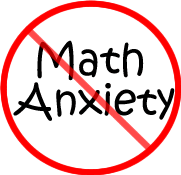 Anxiety during math exams hurts performance. Doing poorly on math exams can increase anxiety. This vicious cycle can push people away from math. How can we use a little cognitive design to change that?
Anxiety during math exams hurts performance. Doing poorly on math exams can increase anxiety. This vicious cycle can push people away from math. How can we use a little cognitive design to change that?
A new study by psychologists at the University Chicago suggests an answer. They did brain scans of highly anxious math students and found that simple warm up tasks (doing easy math problems) distracts the brain regions generating the anxiety and improved performance on an exam. The key is to interrupt the anticipation phase when negative emotions generate a cascade that closes down our brain’s ability to do math.
Adding anxiety reducing warm-up activities is something we can easily do to improve not only test performance but learning and teaching.

Posted in Service Innovation | No Comments »
October 25th, 2011
 From time to time the Psychology Press makes key papers available for free. This week they have opened up some papers on cognitive neuroscience. Cognitive designers will find, On The Functional Anatomy of the Urge-for-Action, of special interest.
From time to time the Psychology Press makes key papers available for free. This week they have opened up some papers on cognitive neuroscience. Cognitive designers will find, On The Functional Anatomy of the Urge-for-Action, of special interest.
The discussion paper provides a review of what we know about everyday urges for action such as yawning and swallowing as well as mental health challenges such as obsessiveness compulsive disorder. They find a common neural architecture for all such urges that is distinct from the brain regions that drive intentional behaviors. The article provides important background for designers and innovators working on behavior change challenges.

Posted in Behavior Change, Related Fields | No Comments »
October 22nd, 2011
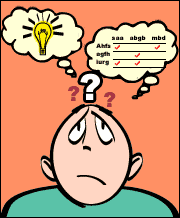 Most of the judgments we make are strongly determined by cognitive biases of one type or the other. The more important a decision the bigger the role biases play. Our efforts to mitigate the effects of biases by collecting data, using analytics and otherwise trying to be fact-based often make things worse by adding cost and delays while failing to increase objectivity. Think about performance appraisals.
Most of the judgments we make are strongly determined by cognitive biases of one type or the other. The more important a decision the bigger the role biases play. Our efforts to mitigate the effects of biases by collecting data, using analytics and otherwise trying to be fact-based often make things worse by adding cost and delays while failing to increase objectivity. Think about performance appraisals.
Biases are so deeply entrenched into how we make decisions, especially in an organizational setting, that scholars have noted that we have certain styles or patterns in the way we use them to decide. For example, decision-makers can be thinkers, skeptics, controllers or followers depending upon the cognitive biases and psychological needs they bring to bear on the process.
Finding and understanding the psychological needs behind a bias is often the key breakthrough in a cognitive design project. So I am always on the look out for new scientific studies on the topic. Take for example the study When You Dislike Patients, Pain is Taken Less Seriously that found:
Results indicated lower pain estimations as well as lower perceptual sensitivity toward pain (i.e., lower ability to discriminate between varying levels of pain expression) with regard to patients who were associated with negative personal traits.
Dislike biases the perception of pain in others, at least in a clinical setting when patient’s express high-intensity pain. We tend to discount the pain of others we don’t like.
While it is not clear how general this finding is, it is relevant for cognitive designers working in areas of clinical communication, pain management and ER medicine.
Source of image: Human Factors International

Posted in Cognitive Bias | No Comments »
October 18th, 2011
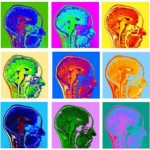 A strategy in cognitive design is to find artifacts that produce potent think-and-feel experiences and reverse engineer them. The idea is to find the pattern of reusable features and functions that makes them work and apply it to other innovation challenges. For example, gamification or applying game dynamics to non-game design challenges is all the rage.
A strategy in cognitive design is to find artifacts that produce potent think-and-feel experiences and reverse engineer them. The idea is to find the pattern of reusable features and functions that makes them work and apply it to other innovation challenges. For example, gamification or applying game dynamics to non-game design challenges is all the rage.
Another big opportunity is art. Can we artify just as we gamify? The essence of the aesthetic experience has resisted explanation for hundred of years but we are making progress. For example, a new paper in the journal of cognitive psychology presents bottom-up factors (abstraction, form, complexity and symmetry) and top-down factors (novelty and viewer expertise) that can be used to predict art appreciation.
These factors are a far cry from a design pattern but they will surely strongly inform our guesses. As the authors point out:
Though the notion that one could ever “fully” explain or predict an aesthetic preference may appear implausibly reductionist, this review demonstrates that scientific methods have shed significant light on a variety of factors that reliably influence art appreciation, paving the way to a greater understanding of the psychology underlying visual art.
I am interested to hear from readers that have attempted replicate artistic effects in their designs or innovations. What pattern did you use? How did you arrive at it?

Posted in Uncategorized | No Comments »
October 15th, 2011
 As organizations grow large, power is centralized and swarms of manager devote their mental energies to monitoring, command and control. Policy and compliance begins to crowd out creativity and passion in a legitimate effort to manage complexity and improve productivity. Bureaucratic control has its purpose but it grinds against how our minds naturally work.
As organizations grow large, power is centralized and swarms of manager devote their mental energies to monitoring, command and control. Policy and compliance begins to crowd out creativity and passion in a legitimate effort to manage complexity and improve productivity. Bureaucratic control has its purpose but it grinds against how our minds naturally work.
Is it the best we can do in the 21st century? Is there a way to manage complexity and scale and still harness the passion and creative mental energies of employees? Is there a way to manage without the traditional manager and keep your organization open, sense-and-respond style to the marketplace?
This is the call to action in The Beyond Bureaucracy Challenge on the Management Innovation Exchange. As of this post there are 63 days remaining and only 11 entries. You can enter an example of an existing organization that is operating beyond bureaucratic control or post a disruptive idea on how to get there.
Stepping beyond bureaucratic control (if you believe it is possible, timely and relevant) is a cognitive organizational design problem that readers of this blog should be well suited to address.
I hope you go after it!

Posted in Events | 1 Comment »
October 12th, 2011
 Cognitive design is the preferred innovation method when psychological impact plays a central role in value creation. This is clearly the case in entertainment, advertising and adventure travel and we wish it where the case in leadership, healthcare and education. But consider the case, as they do in the article Bottling Customer Experience, where competing products are all functionally similar. In such a case the only way to differentiate is through psychological impact. While there are many ways to have such an impact it usually entails authentically touching the heart and accelerating the mind by carefully crafting attributes to produce specific cognitive (intellectual), emotional, motivational and volitional states. The article discussed how Method Products added emotional attributes to common household cleaning products to rapidly gain $200M in market share. While a great case to study they make a broader point:
Cognitive design is the preferred innovation method when psychological impact plays a central role in value creation. This is clearly the case in entertainment, advertising and adventure travel and we wish it where the case in leadership, healthcare and education. But consider the case, as they do in the article Bottling Customer Experience, where competing products are all functionally similar. In such a case the only way to differentiate is through psychological impact. While there are many ways to have such an impact it usually entails authentically touching the heart and accelerating the mind by carefully crafting attributes to produce specific cognitive (intellectual), emotional, motivational and volitional states. The article discussed how Method Products added emotional attributes to common household cleaning products to rapidly gain $200M in market share. While a great case to study they make a broader point:
“Most companies underestimate the power of emotional differentiation, focusing instead on functional differentiation. Rational, fact-based, “hard” attributes always play well in boardrooms and focus groups, but they don’t reflect the real way consumers think and act. Consumer loyalty is the result of a brand’s ability to stand out on both functional and emotional attributes. Sure, most consumers consider functional attributes more important than emotional ones, but what if all your competitors have the same functional attributes? “
The article stresses that emotions are rooted in sensory experience. Features that shape what we see, smell, hear, taste and touch by how they trigger our values, mental models, metaphors and cognitive biases hold the key to creating emotional differentiation. That is what cognitive design is all about.

Posted in Uncategorized | No Comments »
October 10th, 2011
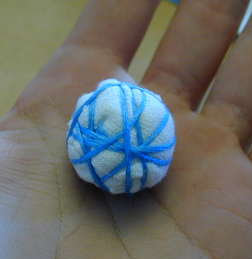 Embodied cognition is an active field of research that explores the role of our body in thinking, learning, creativity and all manner of cognitive activity. These results are especially relevant to cognitive designers because our bodies are a natural interface to the artifacts we create.
Embodied cognition is an active field of research that explores the role of our body in thinking, learning, creativity and all manner of cognitive activity. These results are especially relevant to cognitive designers because our bodies are a natural interface to the artifacts we create.
Take for example, recent research at Notre Dame that suggests we can think better under certain circumstances if we are able to hold an object near our hands. Subjects were asked to analyze a set of complex geometric shapes. One group held their hands by the images another group put their hands in their lap. Those with their hands by the images performed better. The researcher offer this insight:
“Near the body, and especially near the hands, attention to detail is crucial because subtle differences among objects can differentiate the harmful from the benign….”
Studying visual representations plays an important role in math, science, the arts and many other human endeavors. When high visual acuity is critical it might be smart to use our hands – literally.

Posted in Uncategorized | No Comments »
October 7th, 2011
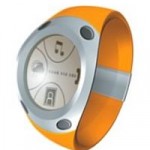 Functional jewelry includes wearable artifacts that are truly beautiful but also do something really useful, often everyday. I just completed a small innovation project with a client where we looked at trends and used cognitive design to prototype new product concepts for functional jewelry that fit their core competencies in electronics.
Functional jewelry includes wearable artifacts that are truly beautiful but also do something really useful, often everyday. I just completed a small innovation project with a client where we looked at trends and used cognitive design to prototype new product concepts for functional jewelry that fit their core competencies in electronics.
We can make wearable gadgets that are already useful more beautiful as some net-connected watches are or we can take jewelry that is already beautiful such as bracelets or rings and make them more useful. A third category includes wearable artifacts that are designed from the ground up to include both art and functionality, for instance devices that support personal informatics, wearable computing, environmental causes (e.g. jewelry made from crystals the absorb greenhouse gases) and even innovation in art-based approaches to therapy or behavior change.
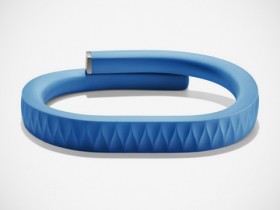 Jawbone just announced how they are using their strength in blue tooth technology and design skills in inescapable engagement to create UP, a piece of functional jewelry that works with a smart phone App to track your movement, sleeping and eating patterns and act as a life coach.
Jawbone just announced how they are using their strength in blue tooth technology and design skills in inescapable engagement to create UP, a piece of functional jewelry that works with a smart phone App to track your movement, sleeping and eating patterns and act as a life coach.
UP is a great example in the personal health informatics space. It also raises the question of beauty. How do you really combine art and product engineering?
As I cataloged and deconstructed examples of functional jewelry two reusable design patterns emerged. I was surprised by how much activity and potential there is the market. There is a lot of opportunity for cognitive designers in functional jewelry, especially if we start with the art.
Interested to hear from readers that own functional jewelry.

Posted in Related Fields | 1 Comment »
 Researchers at Arizona State University have found that our mood or frame of mind can impact how averse we are to losses. This in turn biases how we make basic financial decisions. Its the preference for a bird in the hand versus two in the bush.
Researchers at Arizona State University have found that our mood or frame of mind can impact how averse we are to losses. This in turn biases how we make basic financial decisions. Its the preference for a bird in the hand versus two in the bush.








